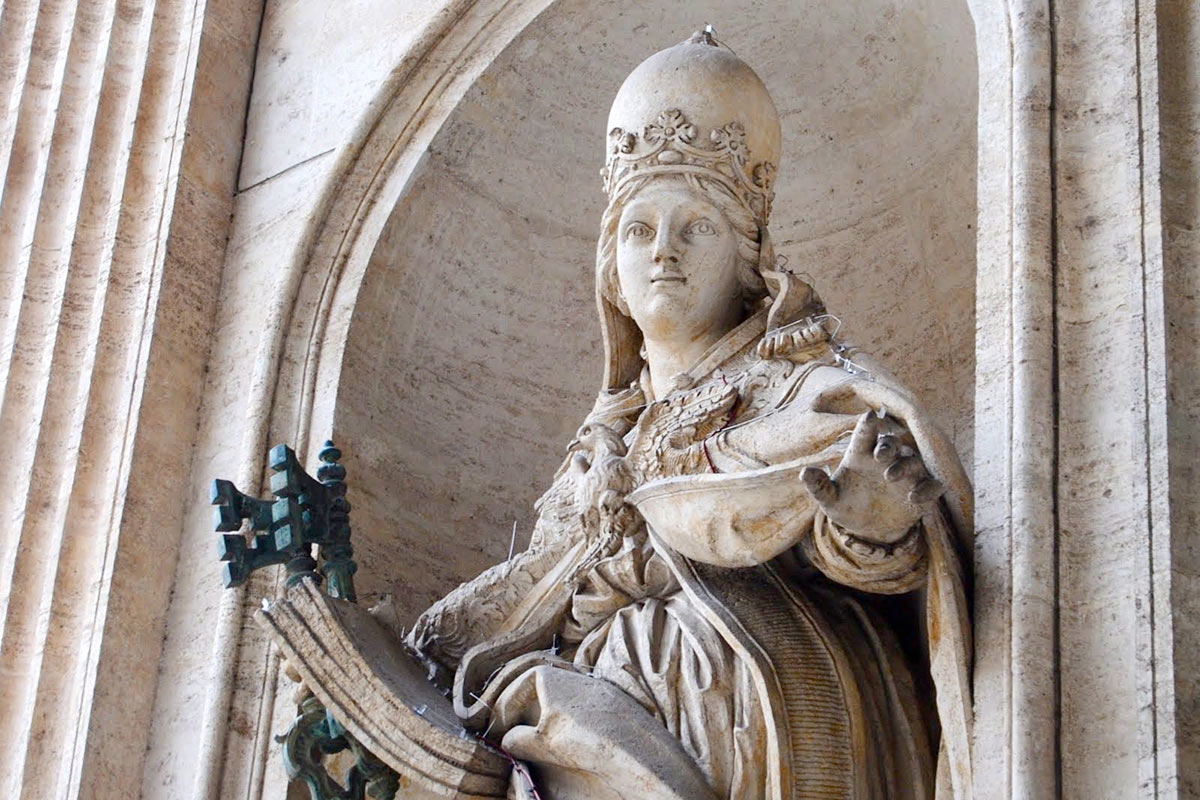
Pink smoke over the Sistine Chapel? Evidence is building that an early pope from the 9th Century in the Middle Ages wore robes to express her piety – as well as to conceal her gender – when a woman disguised as deacon was elected pope.
After centuries of denial from the Vatican and Catholic Church, especially after the reformation, a bold fresh look at the history of ‘Popess’ Joan or ‘Johanna Angelicus’ has been written by Flinders University international researcher and adjunct academic Michael Habicht.
Using old materials, including “amazingly consistent” written records and coins from the early Middle Ages, Mr Habicht has documented further evidence of the first female pope (circa 856-858 AD, after Pope Benedict III and before Pope Nicholas I).
“Around the world, there is growing support for the ordination of women in the Catholic Church, as well as some in the church who support the appointment of a female Pope in the near future,” says Mr Habicht, who is based in Zurich, Switzerland.
“This research builds on earlier quests to establish the existence of female priests in the early centuries of Christianity.
“While the length of the pontificates were historically attested, there are signs that the pontificate of a woman was later removed from the list of popes.
“Since then, the world has wondered whether this is the truth of whether it is a legend that persisted.”
Mr Habicht and co-researcher grapho-analyst Marguerite Spycher found a trail of new clues about the life and times of Joan.
Although a lot of this information has been wiped or whitewashed in history, there were several new evidence, including from coinage from that era that carried monographs for each Pope.

“While the church controlled all written materials at the time, coins were not easily removed from circulation so remain as hard evidence of a different pope timeframe,” Mr Habicht says.
A silver coin (Denier) from the period 856 to 858 shows the inscription SCS PETRVS (Saint Peter) and the papal monogram IOHANIS. In numismatics this coin type is wrongly assigned to the later Pope John VIII (872 – 882), although his name monogram shows clear differences.
Chroniclers of the Middle Ages reported oral stories, inscriptions and even statues to build the legends of Pope Joan, who was eligible for clergy service in Rome at that stage of Frankish European history.
It also has been recorded that Pope Joan’s life, along with her reputation and papacy, may have ended in 858 when she gave premature birth to a child during a procession from St Peter’s Cathedral back to the Lateran Palace.
Hundreds of stories, including contemporary books and film, have immortalised her legend, making Pope Joan a clerical and feminist trailblazer.
“The concept that a ‘holy mother’ could lead the church successfully and perform well in her pontificate entirely contradicts church doctrine and alleged tradition, that the Holy See was incumbent only and exclusively by men,” Dr Habicht says.
“At a certain point after Pope Joan, the church even introduced a strange ritual that every new elected pope had to sit on a special toilet chair while the youngest cardinal-deacon checked for male genitalia.
“Even the term Popess (Papissa in Italian, Päpstin in German) derives from the Greek ‘Papa’ meaning ‘Holy father-feminine’,” he says.
The new research has been translated into English from the German version, entitled Päpstin Johanna: Ein vertuschtes Pontifikat einer Frau oder eine fiktive Legende? (published by Verlag, Berlin).

